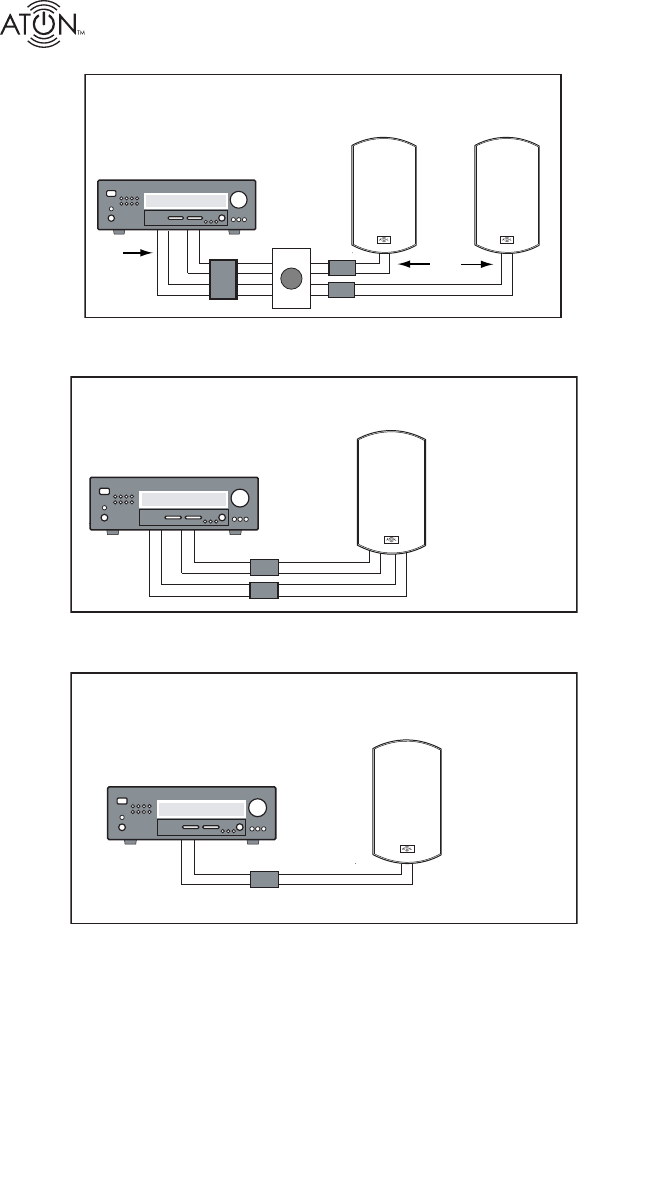
Page 4 ©2007 • All rights reserved.
Storm Series Outdoor Speakers
Note 1: Low voltage wiring must be run in accordance with the National Electrical Code as well as any other applicable provi-
sions of the local building codes in your area. In some cases (such as commercial installations), running the wire in conduit may
be required. If you have any questions concerning the wiring of speakers in your home, contact your local building and inspection
department.
Note 2: It is recommended that you use quality CL-2 or CL-3 rated stranded speaker wire when installing ATON speakers.
Solid-core “Romex” type wire is not acceptable! Use at least 16AWG speaker wire for runs up to 100 feet, and at least 14 AWG
speaker wire for runs up to 200 feet. If you must cross high-voltage lines, always do so at a 90 degree angle to avoid audible
hum through the speakers!.
Note 3: When pre-wiring for outdoor speakers, it is essential to make direct wire runs from the head-end to each speaker. Do
not run speaker wires in series or parallel, and do not “daisy-chain” speakers to common wiring. There are instances where
speakers will be connected directly to an amplifier. The use of spade lugs or bannana plugs is recommended in these instances.
• Use any of the stereo wiring methods to connect to a DVC speaker.
This example shows 2 separate 2 conductor speaker wires run from
the amplifier to the DVC speaker.
+
-
+
-
+
-
+
-
A/V Receiver/Amplifier
Volume
Control
• One 4 conductor speaker wire runs from the amplifier to a stereo
volume control, then one 2 conductor speaker wire runs to each
stereo speaker.
+
-
+
-
+
-
+
-
A/V Receiver/Amplifier
4
Conductor
Wire
2
Conductor
Wire
Figure 3.4 - Wiring: Amplifi er to Speakers w/ Volume Control
Figure 3.5 - Wiring: Amplifi er to Speaker-DVC
• Use any of the wiring methods to connect to a mono speaker.
This example shows a 2 conductor speaker wire running directly from
the amplifier to the mono speaker.
+
-
+
-
A/V Receiver/Amplifier
Figure 3.6 - Wiring: Amplifi er to Speaker-Mono














